Celebrating Kwanzaa
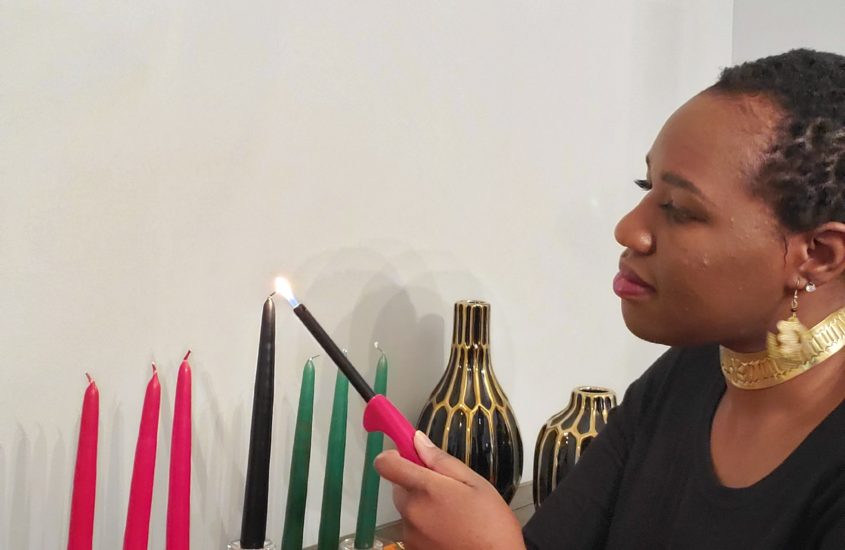
Neither me or Jeff learned much about the meaning of Kwanzaa when we were growing up. As I got older and started learning about my African origins, I became curious about this very under-represented holiday. Now that I am married and have my own home I want to start incorporating this tradition in our household. Kwanzaa represents so much good and exemplifies what we should be as a people. So many of us as African Americans don’t celebrate this and it is mostly because we were never taught. When searching for the meaning of Kwanzaa, others around me had very little knowledge of what it is or what it means. I am hoping to spread the word and inspire you to honor this tradition in your home.
What is Kwanzaa?
Kwanzaa is a celebration of African heritage in African American culture. It runs every year from December 26th- Jan1rst. The premise of Kwanzaa is based on the Nguzo Saba (Seven Core Principles) that we should live by as black people. These principles emphasize unity, community, and family. Each candle represents one of the core principles and is lit on each day of Kwanzaa.
- Umoja- Unity To strive for and maintain unity in the family, community, nation and race.
- Kujichagulia- Self Determination To define ourselves, name ourselves, create for ourselves and speak for ourselves.
- Ujima- Collective Work and Responsibility To build and maintain our community together and to make our Brother’s and sister’s problems, our problems and to solve them together.
- Ujamaa – Cooperative Economics To build and maintain our own stores, shops and other businesses and to profit from them together.
- Nia- Purpose To make as our collective vocation the building and developing of our community in order to restore our people to their traditional greatness.
- Kuumba – Creativity To do always as much as we can, in the way that we can, in order to leave our community more beautiful than when we inherited it.
- Imani- Faith To believe with all our hearts in our parents, our teachers, our leaders, our people and the righteousness and victory of our struggle.
The Ngozu Saba offers us a set of principles that help define and enhance our humanity in the sense of community and in the world. If, as African Americans, we truly adopted and lived by these principles, we wouldn’t be so divided as a people. The lack of knowledge surrounding strong principles like these that would unify us as black people is not by accident. We need to educate ourselves and start seeing each other as partners in the world, not competitors. Traditions that honor, represent, and can lead us to a more ideal version of ourselves should be highlighted in black culture. It’s not too late to start celebrating Kwanzaa and to teach your family about its importance/relevance in our culture.
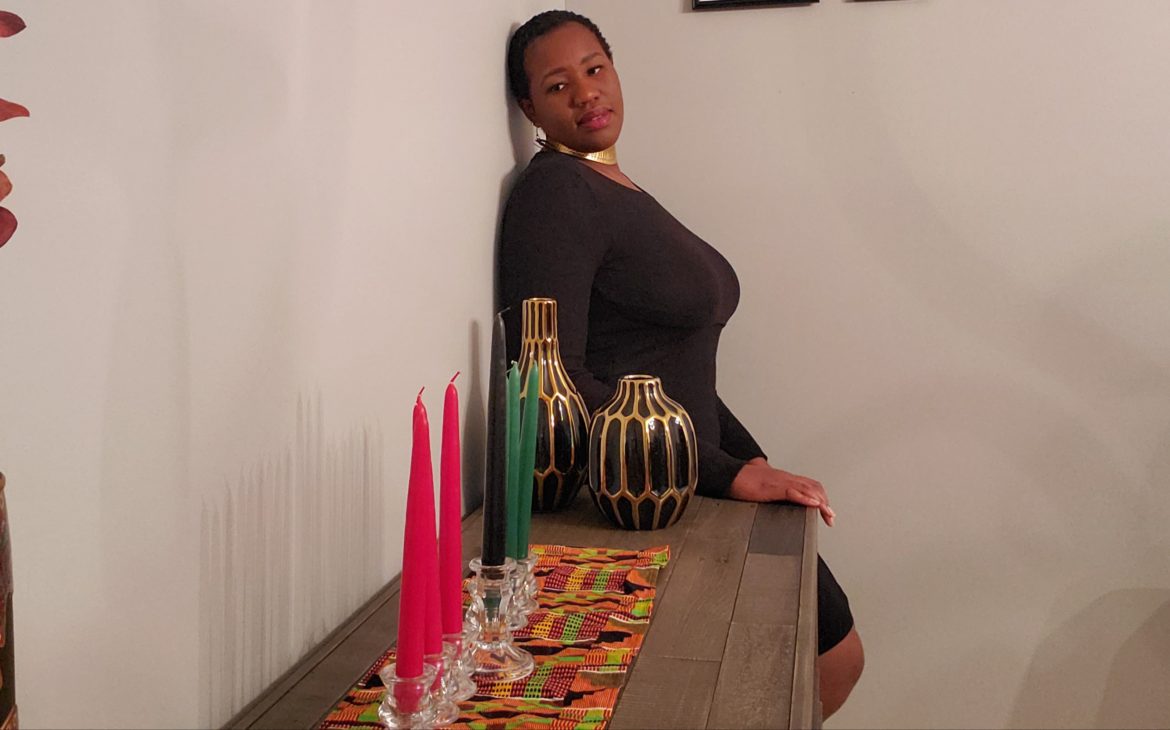
Celebrating
I truly did not know where to start when I thought about celebrating Kwanzaa. I delayed celebrating for years because I felt I did not know enough about it to start doing it. But you have to start somewhere and it doesn’t have to be perfect the first time you do it!
The first step is to get the candles. You will need 7 candles- 3 red, 3 green, and 1 black. The red represent struggle. The green represent hope. The black represent us as black people. These are called the Mishumaa Saba. I bought all seven candles as a set from amazon for twenty bucks. The candles will be placed on the Kinara- 7 pronged candleholder. I didn’t get too fancy with mine. I used regular clear candlebra holders. Whatever you have is fine! Placement of the candles is more important. The black candle gets placed in the middle. The red ones go to the left of it while the green ones go to the right.
The candles and candleholder gets placed on a mat. Traditionally it is placed on a straw mat called the Mkeka. I used a kente cloth which still represents African culture. Mazao- ears of corn can be placed on the mat for every child you have and if you have no children place two for the children of Africa. A kikombe cha umoja– unity cup can be placed and all can drink from it at the end of the candle lighting.
The candle lighting starts with the center black candle on December 26th. The following evening the the far left red candle is lit. You continue to light the candles from left to right all the way to Jan 1rst. Some do a variation of this and alternate green and red after the first red candle is lit to represent hope. After the candle is lit you can discuss the day’s principle as a family and what it means to each of you. At the end you say “Harambe” seven times which means ‘let’s pull together’ in Swahili. At the last day you have a feast – Karamu -and exchange gifts particularly with the children. The gifts should be more thoughtful, homemade items as opposed to store bought gifts. These should promote growth, achievement, and success.

For my first Kwanzaa, I did not have everything perfectly on the mat as described. But I am so glad that we at least started this tradition and by doing we are learning more along the way. Jeff and I are looking forward to getting better every year and bringing awareness to all those around us. We hope to be able teach our children one day and hopefully they will pass it on to theirs. If you ever thought about celebrating Kwanzaa, start now. All the other symbolic stuff is nice but the most important part is focusing on the core principles and bringing that mindset with you into the new year.
As my last post in 2019, Jeff and I wish you a Happy New Year!!! See you next year!
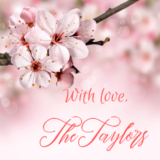
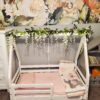

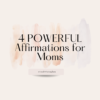


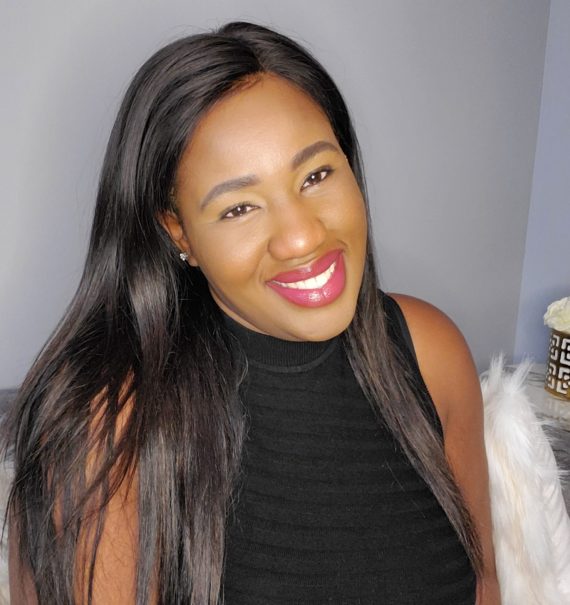

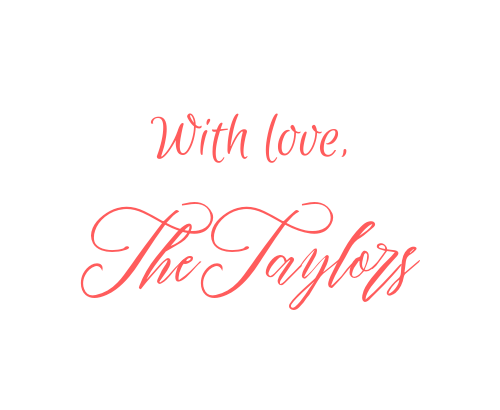
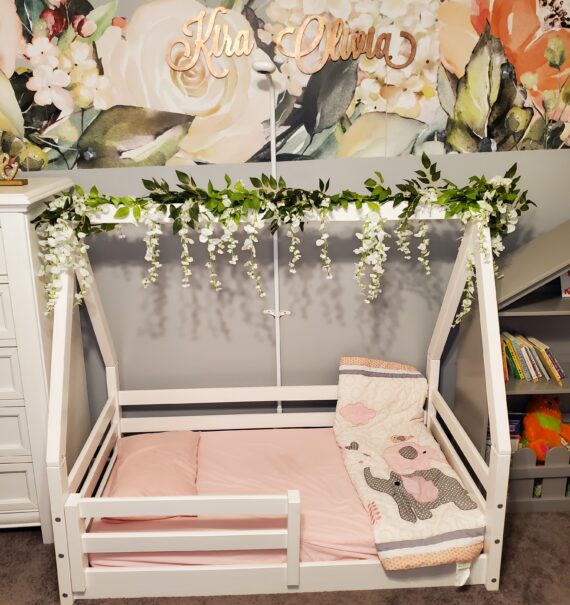
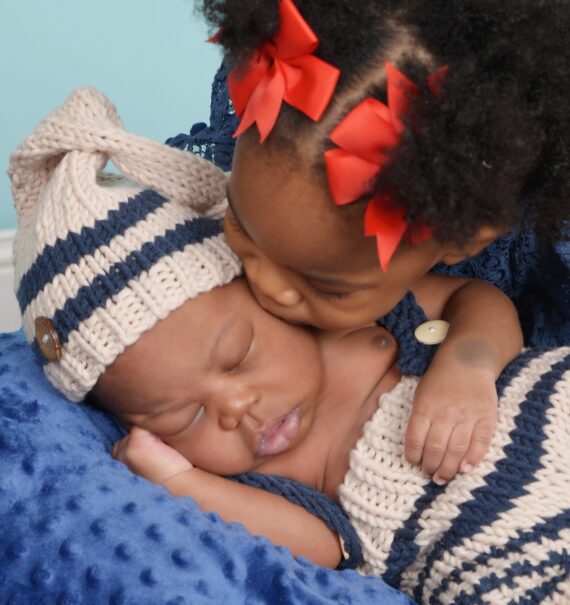
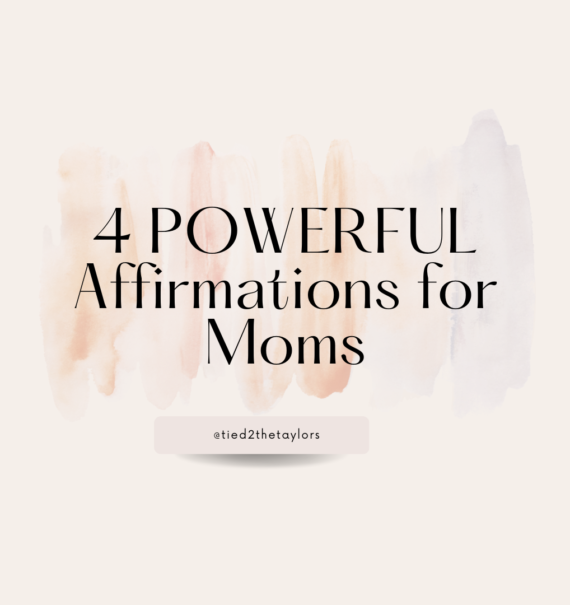
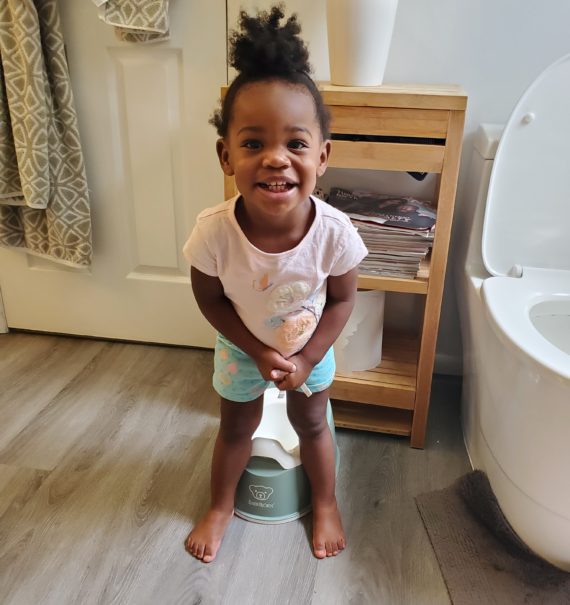
Harrison
Hello There. I discovered your blog the use of msn. This is
a really well written article. I’ll make sure to bookmark it and return to
learn more of your helpful information. Thanks for the post.
I’ll certainly return.
My site; Roosevelt
Tam
Woh I your content, saved to fav!
my blog :: https://trainingteachers.org.za/groups/why-it-is-advisable-to-consider-a-ketogenic-meal-plan-99842138/
Drusilla
I needed to write you this little remark to say thanks a lot again over the
gorgeous basics you’ve discussed here. It was certainly surprisingly generous
of people like you to give unreservedly all a lot of folks
would’ve marketed as an electronic book to make some cash on their own,
notably seeing that you could have tried it if you desired.
These principles as well worked like a good way to be certain that someone else have a
similar dream the same as my personal own to understand way more with
regard to this condition. I believe there
are numerous more pleasurable occasions in the future for
those who read through your blog post.
Take a look at my blog :: Ultimate Keto Fuel
Estela
Hi, i think that i saw you visited my web site thus i came
to ?return the favor?.I am trying to find things
to improve my website!I suppose its ok to use some of your ideas!!
Also visit my web site; DivaTrim Keto Reviews
Luciana
Very nice layout and superb content, absolutely nothing else we require :D.
Feel free to surf to my website – http://uniqueketochoice.org/
Leonel
I am glad to be a visitant of this pure blog, regards for this
rare information!
My website; http://www.ecbay.com/user/profile/74322
Dorie
Hello, I enjoy reading through your article. I like to write a little comment to
support you.
Here is my web site; vacuum glovebox
write my essay
Whoa loads of useful material.
Best Essay writing
write my essay https://writeessayformoney.com
buy cheap essay online
Incredible tons of great facts!
Best Essay writing
buy cheap essay online https://buyessayonlinesafe.com
cheap essay writing service
Nicely put, Kudos!
Best Essay writing
cheap essay writing service https://allbestessaywritingservice.com
write my essay
Kudos, A lot of material!
Best Essay writing
write my essay https://argumentativeresearch.com
essay helper
Nicely put. Thanks.
Best Essay writing
essay helper https://buyingtermpaper.com
write my essay cheap
Thanks. Aweome stuff.
Best Essay writing
write my essay cheap https://buyessaysearch.com
buy essay online for cheap
Useful info Cheers.
Best Essay writing
buy eszay online for cheap https://essaypaperwritingservice.com
Sammie
It’s fantastic that you are getting ideas from this paragraph as well as from our argument made at
this place.
Stop by my homepage: Ebony
Sima
I think this is one of the most important information for me.
And i’m glad reading your article. But want
to remark on few general things, The website style is ideal, the articles is
really nice : D. Good job, cheers
Check out my web site; Stefanie
Marina
This piece of writing offers clear idea for the new viewers of blogging, that actually how to do blogging.
Feel free to surf to my website :: https://www.ai4children.org/forums/users/edenborn2070/
essay helper
Regards! I like it.
Best Essay writing
essay helper https://onlineessayforyou.com
buy essay online for cheap
Whoa all kinds of amazing facts!
Best Essay writing
buy essay online for cheap https://writemyessaybest.com
write me an essay
You actually reportd it very well!
write me an essay
essay helper https://orderessayonlineuk.com
write my essay
Witth thanks, Quite a llot of knowledge!
Best Essay writing
write my essay https://writepapersforme.com
buy essay help
Nicely put. Thank you.
Best Essay writing
buy essay help https://buyessaywritingservice.com
cheap essay writing service
Terrific content Thanks.
Best Essay writing
cheap essay writing service https://essayhelpforall.com
Marilyn
hey there and thank you for your info ? I’ve definitely picked up anything new from right here.
I did however expertise some technical points using this site, as I experienced to reload the site a lot of times previous to I could get it to load properly.
I had been wondering if your web host is OK? Not that I’m complaining, but sluggish loading instances times will
very frequently affect your placement in google and can damage
your quality score if advertising and marketing with Adwords.
Well I am adding this RSS to my email and could look out for a lot more of
your respective fascinating content. Make sure you update
this again soon.
my web-site; http://lifevibescbd.org/
What is an analytical research paper
You actually expressed this wonderfully!
Best Essay writing
What iis an analytical research paper https://admissionessaywritingservice.com/?main.purpose.of.a.persuasive.essay
Brodie
Please let me know if you’re looking for a article author
for your weblog. You have some really good articles
and I feel I would be a good asset. If you ever want to take some of the load off, I’d really like to write some content for your blog in exchange for
a link back to mine. Please blast me an e-mail if interested.
Cheers!
My site Breanna
Myrtle
I real lucky to find this website on bing, just what I was looking for 😀 as
well saved to favorites.
my web site: Если ваш браузер не поддерживает автоматической переадресации
Quyen
Keep on writing, great job!
Here is my web blog: https://fitnessketodiet.net/
paper writing
Useful matdrial Kudos.
Beest Essay writing
paper writing https://essaygood.com
buy cheap essay online
You explained that perfectly.
Best Esssay writing
buycheap essay online https://highqualitywritingservice.com
Difference between research and thesis
You suggested that effectively.
Best Essay writing
Difference between research and thesis https://essaysonservice.com/?page=british.library.phd.thesis.online
Difference between research and thesis
You suggested that effectively.
Best Essay writing
Difference between research and thesis https://essaysonservice.com/?page=difference.between.research.and.thesis
Adrianne
Thank you for every other excellent article. The place else may
anybody get that kind of information in such an ideal manner of writing?
I’ve a presentation next week, and I’m at the search for such information.
Here is my site … Virgilio
Marlene
It’s the best time to make some plans for the future and it’s time to be happy.
I’ve read this post and if I could I wish to suggest you some interesting things or advice.
Maybe you could write next articles referring to this article.
I desire to read more things about it!
Take a look at my site; Life Vibes CBD Oil Review
Tanisha
Hello.This article was extremely remarkable, especially since I was
looking for thoughts on this topic last Tuesday.
my web page :: https://greenleafhealingcbd.com/
Adalberto
Thanks for a marvelous posting! I certainly enjoyed reading it, you may be
a great author. I will make sure to bookmark your blog and definitely will come back someday.
I want to encourage one to continue your great posts, have a
nice evening!
My site … Rosaline
Carmine
Loving the info on this internet site, you have done great job on the blog posts.
Also visit my webpage :: http://askcongress.org/ask-congress-forum/users/evelync861128/
Gwendolyn
Very great information can be found on site.
Feel free to visit my webpage: Grown N Flow Biotin Gummies
Mariel
Hello! I just wanted to ask if you ever have any issues with hackers?
My last blog (wordpress) was hacked and I ended up losing several weeks of
hard work due to no back up. Do you have any solutions to protect against hackers?
My homepage … DivaTrim Keto Reviews
Jorg
Only a smiling visitor here to share the love
(:, btw great layout.
my blog post :: https://www.indiaolx.com/user/profile/39273
Bill
I went over this web site and I conceive you have a lot of fantastic
information, bookmarked (:.
my webpage :: http://fitnessketopills.com/
Theodore
Aw, this was an incredibly nice post. Taking the time and actual effort to generate a top notch article…
but what can I say… I put things off a whole lot and don’t manage to get anything done.
My blog post Keto Slim Cuts
Josie
Wonderful beat ! I wish to apprentice even as you amend your web site, how could
i subscribe for a weblog website? The account aided me a applicable deal.
I have been a little bit familiar of this your broadcast provided vivid clear idea.
Here is my page :: https://trainingteachers.org.za/groups/ideas-how-you-can-stop-smoking-pot-yet-somehow-watch-out-for-the-crater/
Malorie
This piece of writing offers clear idea in support of the new users of blogging,
that in fact how to do running a blog.
Look into my web page – http://simpleketoburns.net/
Jarrod
Yes! Finally someone writes about accessing medical cannabis.
Here is my page … Back
Sidney
I am impressed with this internet site, real I am a fan.
my web blog: Keto Advance Reviews
Lincoln
Hey superb website! Does running a blog such as this take
a lot of work? I’ve absolutely no knowledge of programming however I had been hoping to start my own blog
soon. Anyway, if you have any ideas or techniques
for new blog owners please share. I understand this is
off subject however I just had to ask. Appreciate it!
Feel free to visit my homepage :: https://www.incubateur.artpartage.ca/Are_Raise_By_Itself_._Diets_The_Actual_Best
Cathern
Hello I am so grateful I found your webpage, I really found you by accident, while I was searching on Yahoo for
something else, Anyways I am here now and would just like to say thank you for a
remarkable post and a all round entertaining blog (I also love the theme/design), I don?t have time to browse it all at the minute
but I have saved it and also added in your RSS feeds,
so when I have time I will be back to read more, Please
do keep up the awesome b.
Visit my site http://ultimateketofuel.org/
Aracely
Hello my loved one! I wish to say that this post is awesome, great written and come with almost
all important infos. I’d like to peer more posts like this .
Look into my webpage … https://www.classified.kukooo.com/author/hildredblig/
Geraldo
Some really fantastic content on this internet site, regards for
contribution.
Also visit my webpage … [ПЕРЕЙТИ]
Norris
I needed to thank you for this fantastic read!!
I certainly enjoyed every little bit of it. I’ve got you book-marked to check out new things you post…
my website; Vita Grow XL Reviews
Lieselotte
WOW just what I was looking for. Came here by searching for
cyclical ketogenic
Feel free to visit my page :: Continue shopping »
Violette
Pretty great post. I simply stumbled upon your blog and wanted to mention that I’ve really enjoyed surfing around
your weblog posts. In any case I will be subscribing in your rss feed
and I am hoping you write again very soon!
Feel free to surf to my page https://purespectracbd.org/
Rory
I wanted to post you this very little remark so as to give thanks again over the gorgeous information you’ve documented here.
It was certainly wonderfully open-handed with you to
make freely what most of us could have supplied as an electronic book
to help with making some money for their
own end, specifically given that you might have tried it in case you
wanted. Those ideas as well acted to be a easy way to comprehend some people have similar passion really like my personal own to see great deal more concerning
this condition. I’m sure there are lots of more enjoyable situations ahead for those who see your site.
Also visit my blog post … ACEPTAR
Lacy
It’s going to be finish of mine day, but before ending I am reading this
fantastic piece of writing to increase my know-how.
Here is my webpage: https://payadsocial.com/index.php/ClintonWaylen2066
Debbra
I just couldn’t go away your web site before suggesting that I extremely enjoyed the standard info a
person supply on your guests? Is going to be back incessantly to check up on new posts
my web site – Simple Keto Burns Reviews
Reginald
Very rapidly this website will be famous among all blogging users,
due to it’s fastidious content
Check out my website :: https://www.incubateur.artpartage.ca/ToneyoiDesimonejd
Vivien
We would like to thank you once more Silencil For Tinnitus the
gorgeous ideas you gave Janet when preparing her own post-graduate research as well
as, most importantly, with regard to providing each of the ideas in a blog post.
Provided we had known of your website a year ago,
we may have been rescued from the nonessential measures we were implementing.
Thank you very much.
Mikel
I have learn several excellent stuff here. Definitely worth bookmarking for
revisiting. I wonder how a lot attempt you put to make any such
magnificent informative site.
Here is my page: Keto Slim Cuts Pills
Arlene
Actually when someone doesn’t understand afterward its up to
other viewers that they will assist, so here it takes place.
Here is my web site – XPro Drone App
Hazel
Hurrah, that’s what I was exploring for, what a stuff!
existing here at this blog, thanks admin of this site.
Here is my site; Phillip
Lawerence
First of all I want to say terrific blog! I had a quick question in which I’d like to ask if you don’t mind.
I was interested to know how you center yourself and clear
your mind before writing. I’ve had a hard time clearing my thoughts in getting my ideas out there.
I truly do enjoy writing but it just seems like the first 10
to 15 minutes are usually wasted just trying to figure out how to begin. Any recommendations or tips?
Cheers!
Feel free to surf to my webpage Fermin
Cecilia
Simply want to say your article is as astounding.
The clarity for your publish is just great and i could
think you are a professional on this subject.
Fine with your permission allow me to snatch your feed to keep updated with drawing close
post. Thank you 1,000,000 and please carry on the gratifying work.
My website: Katja
Carmon
I just could not depart your website before suggesting that I really loved the standard
info a person supply in your visitors? Is going to be back
frequently to check out new posts
Here is my blog Madonna
Philip
I do not even know how I ended up here, but I thought this post was great.
I don’t know who you are but definitely you are going to a famous blogger if you are not already
😉 Cheers!
Have a look at my blog; Fanny
Franchesca
Hi there fantastic blog! Does running a blog such as this
take a massive amount work? I’ve no expertise in programming but I was hoping to start my own blog soon.
Anyhow, should you have any ideas or techniques for new blog owners please share.
I understand this is off subject however I simply wanted
to ask. Thank you!
Here is my blog post: Cindi
Annett
Thankfulness to my father who told me concerning this website, this website is in fact remarkable.
Here is my site :: Ila
Eddie
Hey very nice blog!
My homepage; Valerie
Hubert
Peculiar article, just what I wanted to find.
My web-site – Robin
Lenore
Good day! Do you know if they make any plugins to protect against hackers?
I’m kinda paranoid about losing everything I’ve worked hard on. Any tips?
Take a look at my web blog Gennie
Blair
Hi there to every body, it’s my first go to see of this webpage; this webpage includes awesome and in fact good material in favor of readers.
Also visit my site Lamont
Rigoberto
Hi to all, how is everything, I think every one is getting
more from this website, and your views are nice in favor of new
users.
Here is my page – Reginald
Vickey
After checking out a handful of the articles on your web site, I honestly appreciate
your technique of writing a blog. I saved as a favorite
it to my bookmark website list and will be checking back in the near future.
Please check out my website too and tell me how you feel.
Look at my blog; New Glo Hair Review